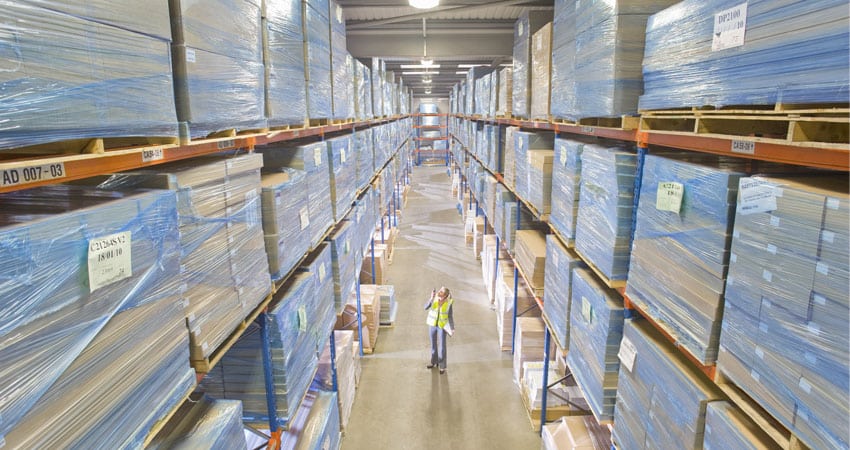In most markets, warehouse space is in short supply, especially for facilities that are 100,000 square feet and larger. As you look for facilities to lease or buy, an in-depth due diligence process is crucial to your success as new space is a major investment and a long-term commitment.
In our blog, “13 Questions to Consider When Weighing a New Distribution Center,” we outlined some of the major considerations in evaluating a potential facility. We’ll now go into some of these issues in more detail, based on observations from selection projects for clients.
Fire Suppression, Product Storage, Lighting
Understand the product classification, sprinkler and storage requirements in the county where the facility is located. Ensure there is correct sprinkler head placement, sufficient water flow and capacity for the building.
Based on the local code, how high can you store different product categories? In a rural area where a client wanted to expand their fulfilment capacity, the only large existing building for lease was classified for farm use and thus didn’t require sprinklers. But in order to meet county requirements for fulfillment, they had to invest $275,000 for a fire suppression system, in a building they did not own. It was a “take it or leave it” proposition.
Facility Clear Height
Ceiling height is a factor that often gets underestimated in terms of storage capability. For roofs with changes in pitch, how does the clear height compare in the middle to the outer edges?
For example, if you intend to have pallets stacked four high, is there enough room throughout the building to maneuver forklifts and install sprinkler heads? Are there any other impediments to uniform racking?
Pallet Racking
Finding a building with existing racking may seem appealing to reduce capital expenses, but the racking placement may not be ideal from a layout perspective or fit your product needs. For instance, are the lift truck aisles wide enough for those you’re currently using? Are the upright and beam weight capacities sufficient for your product?
Pallet racking will vary with product/pallet weight. Are the rack uprights deep enough to accommodate your product overhang? Companies can spend significant amount of cash reconfiguring existing racking, which many times does not save as much as expected vs. new racking.
Dock Doors
Are there enough dock doors in the best proposed layout, with sufficient dock height or ground height? Does your company require dock locks and safety lights? Depending on the type of construction, one new dock door can cost $15,000 to $20,000.
Parking and Traffic Flow
Parking and vehicle traffic areas should include enough room for employee and trailer parking, while not interfering with the truck traffic flow in and out of the facility. Fulfillment centers often have a higher number of workers compared to other industries. Is there sufficient parking to allow for peak demand and growth three to five years out?
Get It in Writing
A client needing rail access to an existing facility was told that the railway company had approved the spur to bring service to within a couple hundred feet of the building. After driving six hours to see the facility, the client that what the salesman failed to mention was that they would have to pay $250,000 and wait two years. Leave nothing verbal; get everything in writing.
Don’t Underestimate the Time Required
From the idea of leasing/buying to occupancy is generally four to six months on the low end to a year, depending on facility size and changes required. The search for a building can be time-consuming if not all criteria are met, or an issue arises. Keep an itemized list of the potential changes and costs beyond the lease/purchase price. Comparing these costs can assist with the selection process.
Consider Due Diligence Help
A second set of eyes can help you spot potential issues during a walk-through and evaluation. Fulfillment consultants can help with the basic facility, layout, storage capacity, potential expansion, automation and conveyance. A consulting engineer can help you with the physical aspects of lighting, power and HVAC.
Not all warehouses are created equal or will be perfect for you from day one. There may be some existing characteristics that were perfect for the prior tenants but not for you. That’s acceptable as long as a plan is established on how those characteristics will be changed and at an acceptable the cost.
Curt Barry is Chairman of F. Curtis Barry & Company

